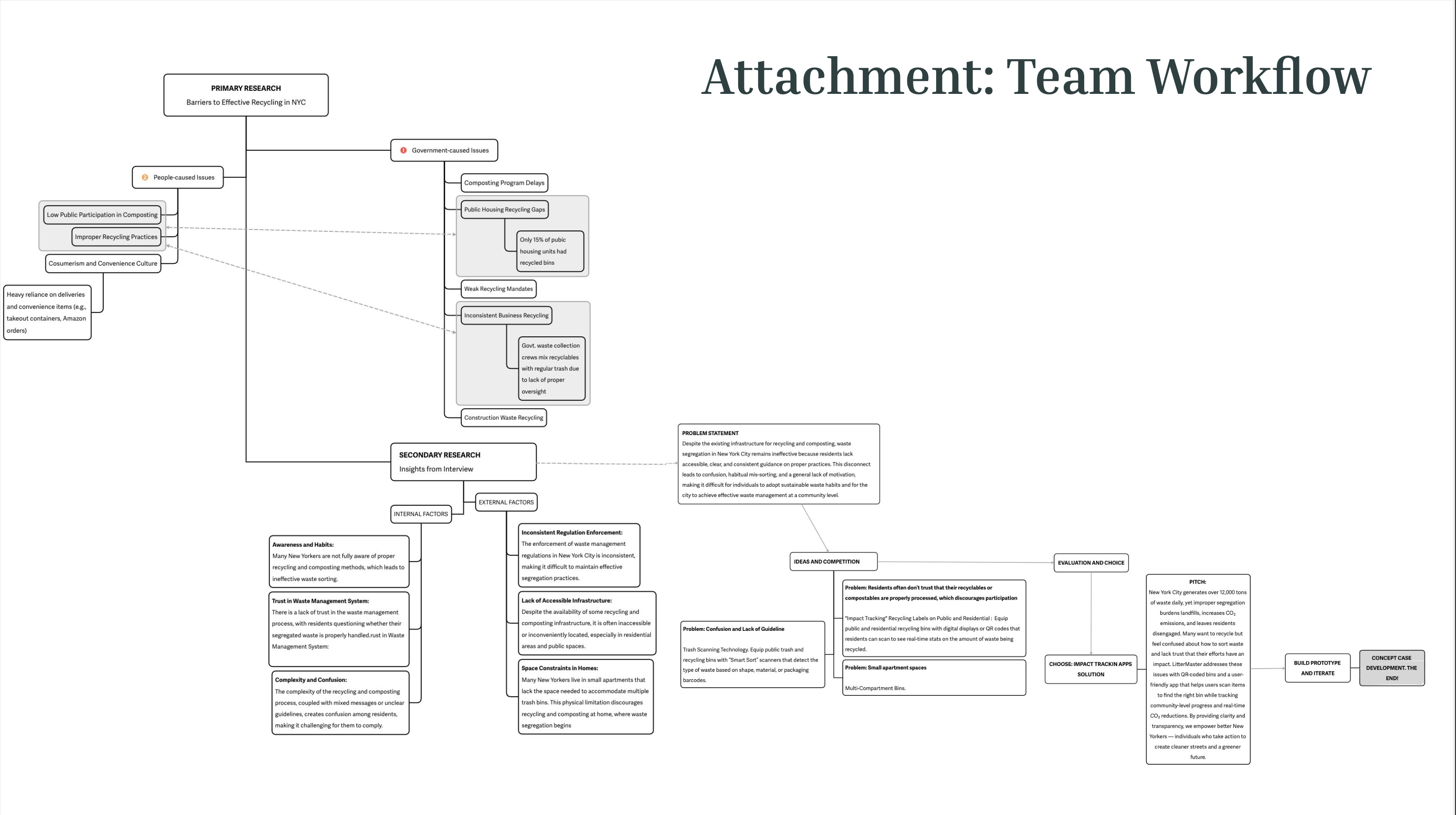LitterMaster App
Interaction Design • UI/UX • Product Innovation
Educating people about trash segregation
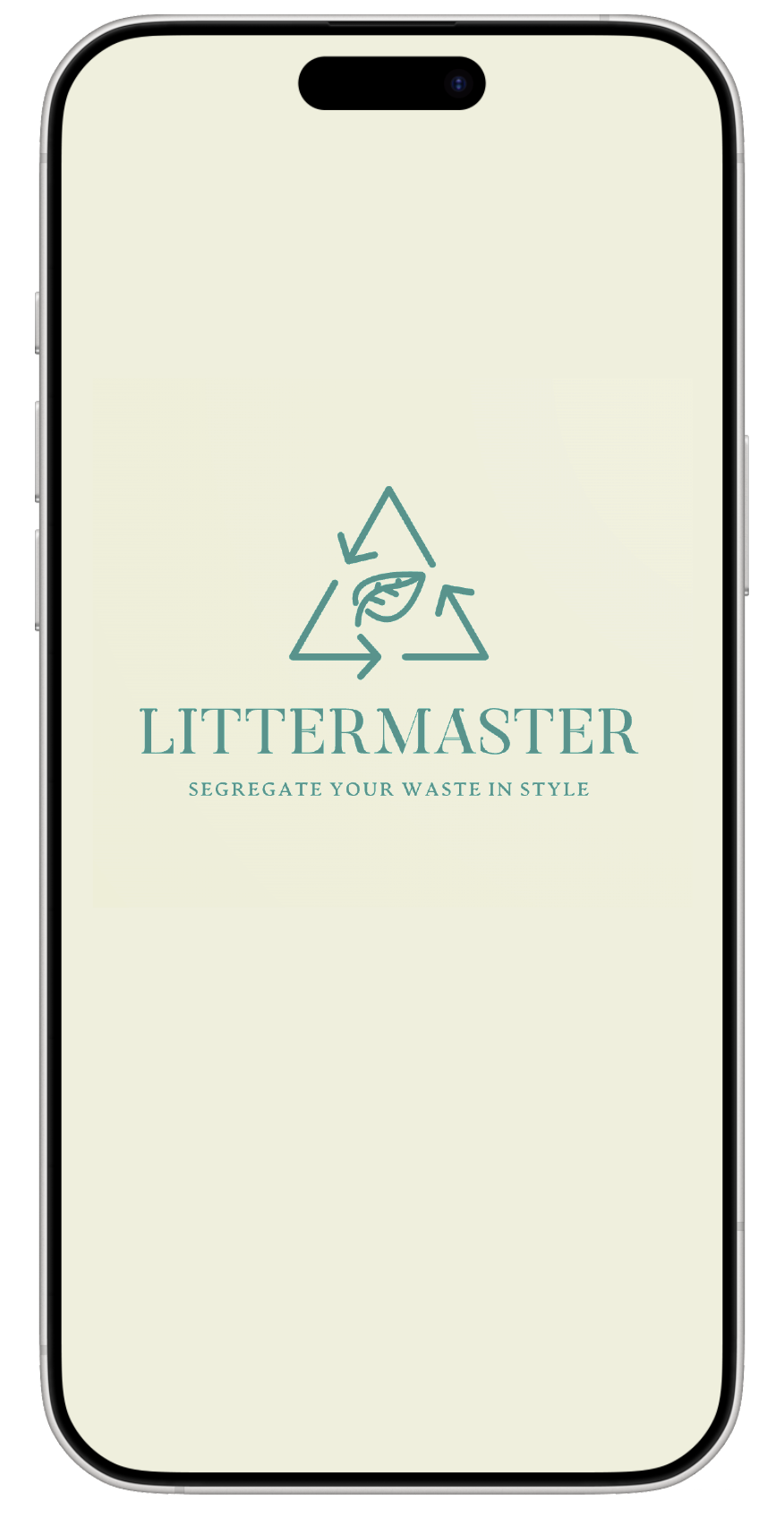
Overview
This project was part of my Human-Centered Design and Innovation course at Columbia University. The prompt was to create something that could help "Make a Better New Yorker." We were drawn to the issue of waste management after reading a New York Times article describing how some NYC streets — especially those without alleys — turn into trash corridors before pickup days. On one block alone, over 370 bags were recorded lining the sidewalks. That article raised a question for me: Are New Yorkers really equipped to handle their waste responsibly? Between confusing recycling rules, lack of feedback, and limited awareness, We realized that waste sorting isn’t just a logistics problem — it’s a challenge rooted in behavior, environment, and accessibility. This project explores how design can make sustainable waste practices more intuitive, actionable, and embedded in everyday life.
Research
How We Started
We conducted 50+ interviews with NYC residents to understand their waste habits. We explored their interest in using an app like LitterMaster and gathered their thoughts on street trash and overflowing bins.
Why an App?
Our motivation was to create a tool that empowers individuals to make informed decisions about waste disposal, bridging the gap between policy and everyday behavior. By educating users and simplifying the process, we aim to reduce contamination in recycling and compost streams, improve community participation, and support a cleaner, healthier city for all.
Personal Observation
We walked around neighborhoods and noticed garbage bags piled around mailboxes, blocking hydrants, and cluttering sidewalks. Even inside buildings, sorting waste was often confusing or completely absent. Through conversations with neighbors and building staff, it became clear that many people didn't know how to properly separate their waste, and few had access to multiple bins at home. Even when bins were present, residents weren't sure what belonged where.
Scale of the Problem
According to the New York League of Conservation Voters, NYC produces nearly 13,000 tons of waste every day, and 81% of it ends up in landfills or incinerators, releasing harmful methane and contributing to environmental damage. One-third of this waste is organic, yet citywide composting participation remains under 5%. To tackle this, NYC introduced a citywide organics mandate, rolling out borough by borough and becoming mandatory for all residential buildings by Fall 2024. Residents must now separate compostable items like food scraps and soiled paper into brown bins for curbside pickup — or face fines starting in 2025. While this is a major infrastructure improvement, behavioral change remains a barrier.
Solution
LitterMaster App
A simple mobile app that helps New Yorkers quickly learn how to sort their waste—whether it belongs in trash, recycling, or compost—following NYC's specific rules. As the city's organics mandate begins in Fall 2024, LitterMaster supports residents in staying compliant and avoiding fines. More importantly, it encourages sustainable habits that contribute to NYC's goal of zero waste by 2030, turning everyday actions into a positive impact for the environment.
Key Features & Solutions
Weekly Dashboard
Shows users their waste patterns, including the percentage of waste produced and sorted each week.
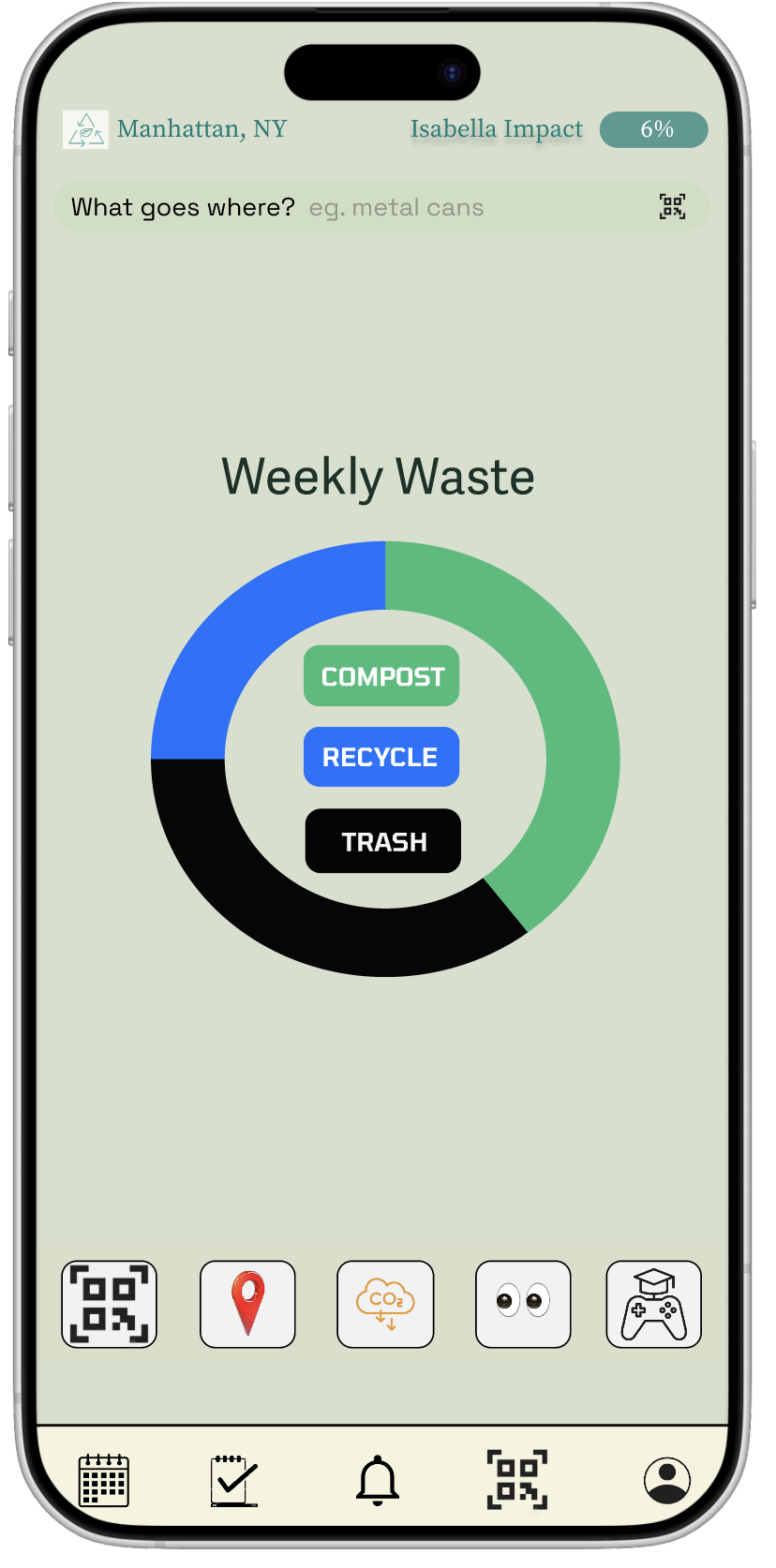
Smart Scan
Uses computer vision to identify items and guide users on the correct disposal method
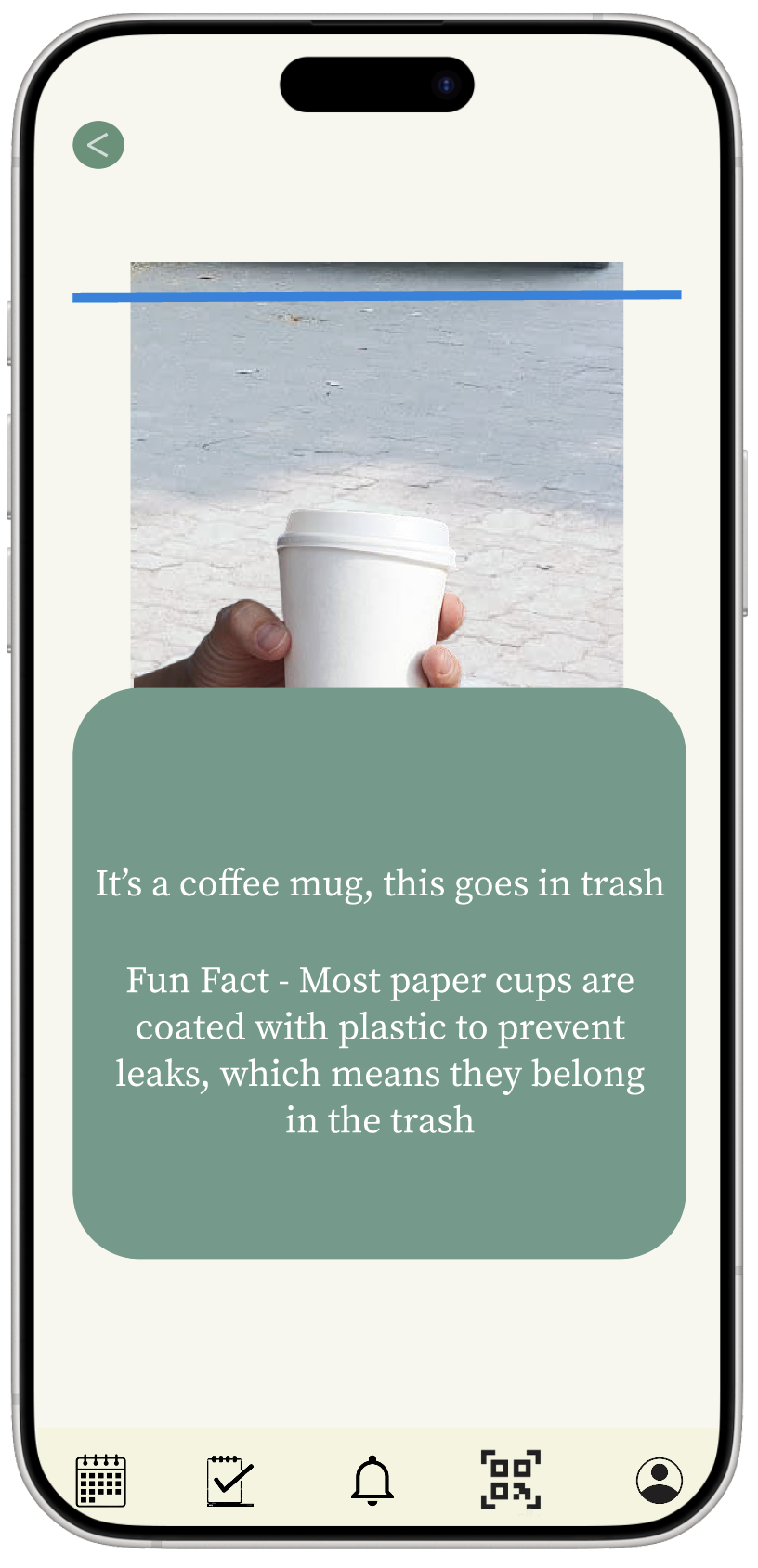
Waste Tracking
Monitors when and where waste is generated and collected across the city.
Impact Meter
Calculates and displays the amount of CO₂ saved through proper waste segregation, helping users see their environmental contribution
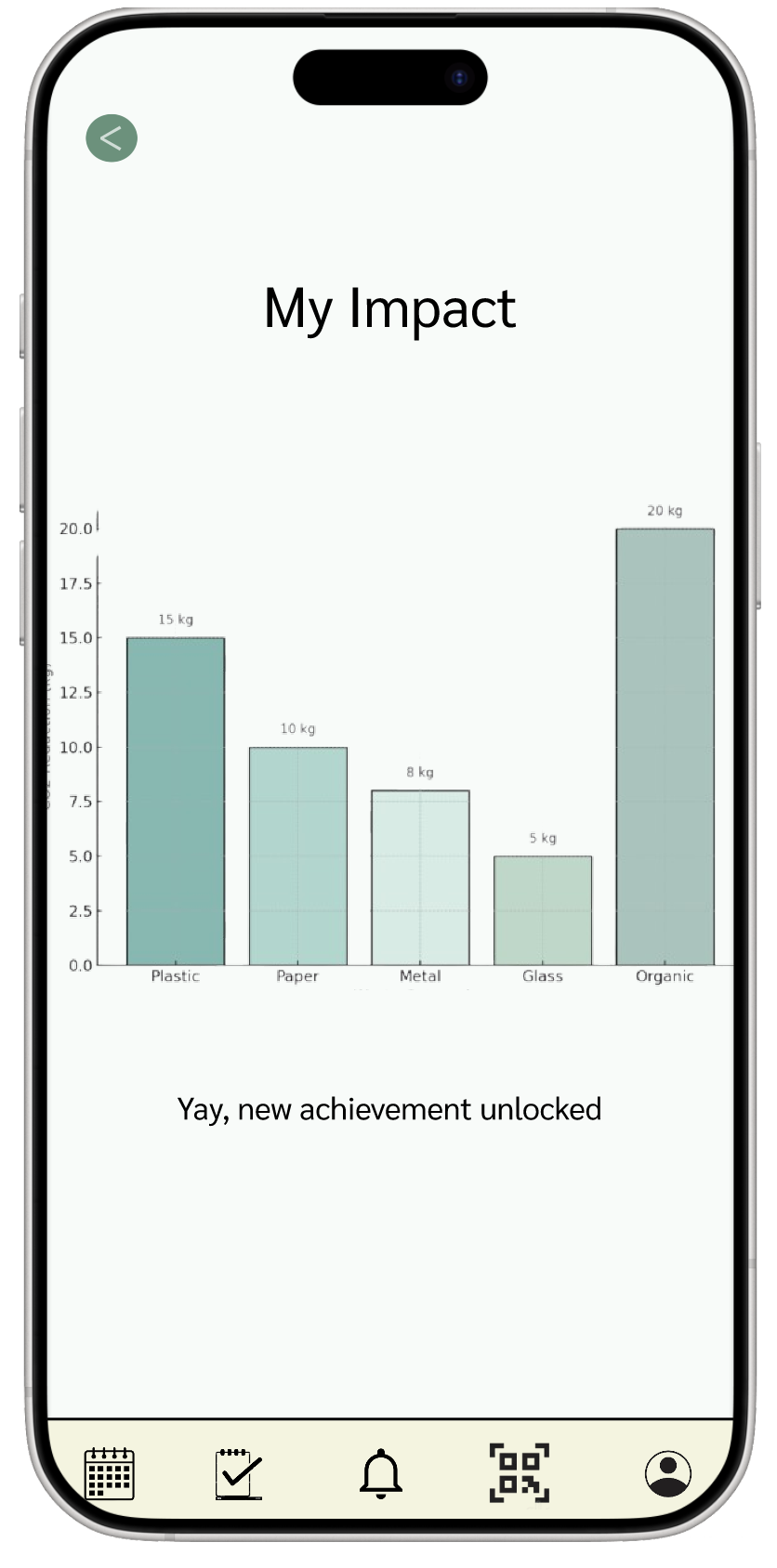
Complete Application Overview
This is a smart waste segregation system that uses computer vision to identify the type of trash being discarded — paper, plastic, metal, or organic. Paired with integrated bin sensors, the system measures the quantity and maps it to estimated CO₂ savings, helping users visualize the positive impact of responsible disposal. To reinforce long-term behavior change, we included interactive, educational games that teach users about recycling in a fun and engaging way. Our goal was to create a seamless experience that not only functions efficiently but also makes sustainable habits easier to adopt through real-time feedback and playful learning.
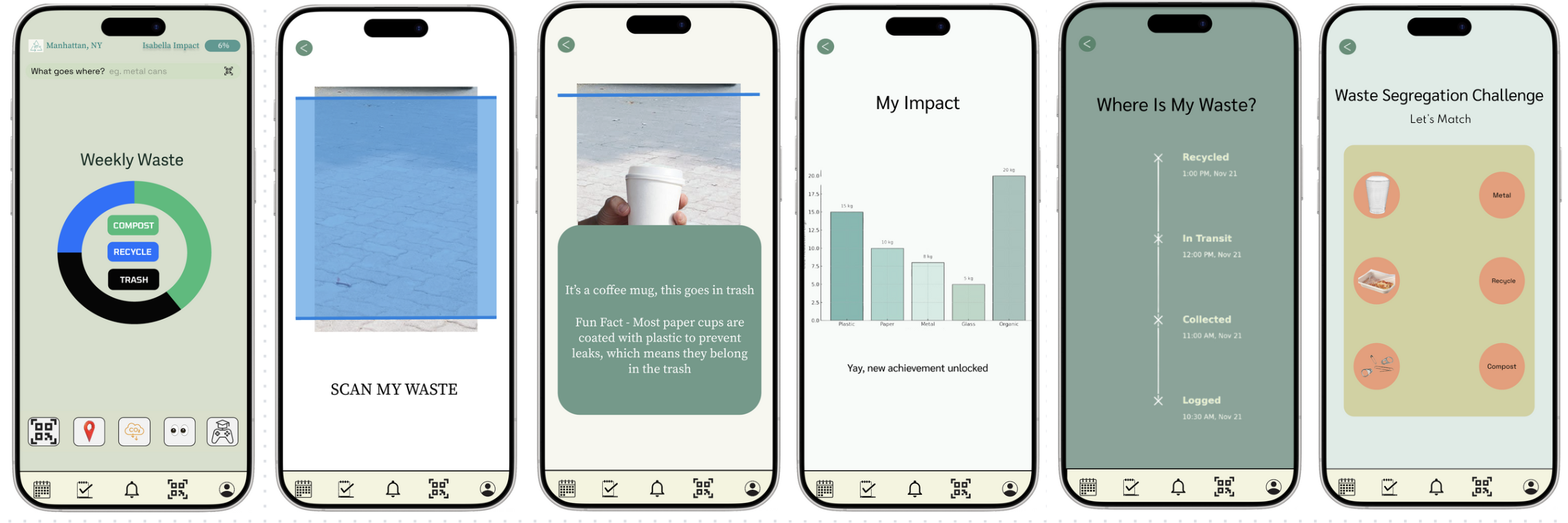
Feedback
The feedback highlights a strong appreciation for the concept, especially for raising awareness about waste management, though concerns were raised about user motivation. Peers expressed reluctance to scan trash or use an app before disposal, citing laziness, lack of time, or lack of incentive. Considering the feedback, I worked on a compact automatic waste sorting trash bin specifically designed for domestic usage. This can be found in project tab listed as "Snart Home Trash Sorter"
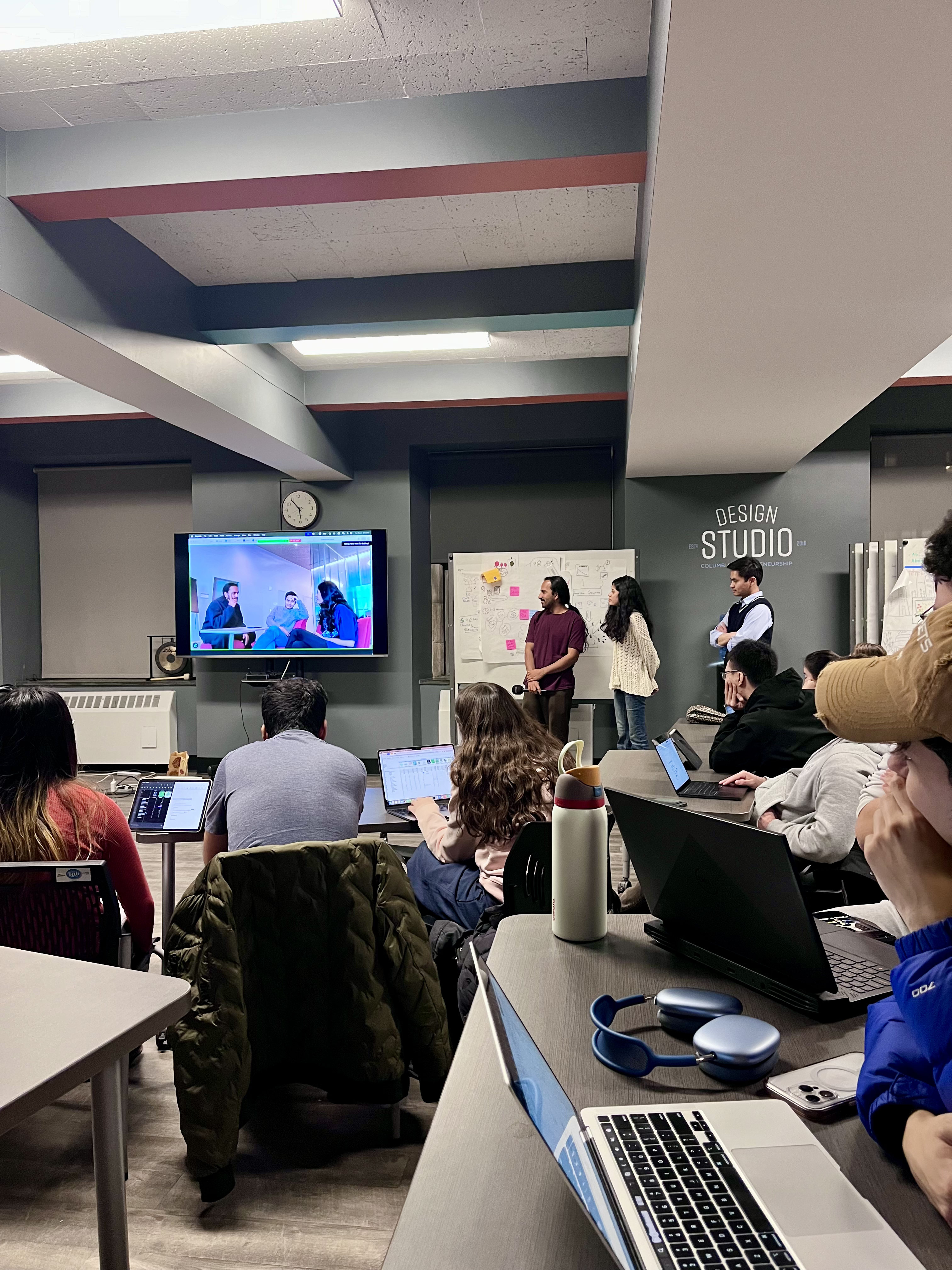
Journey Map
